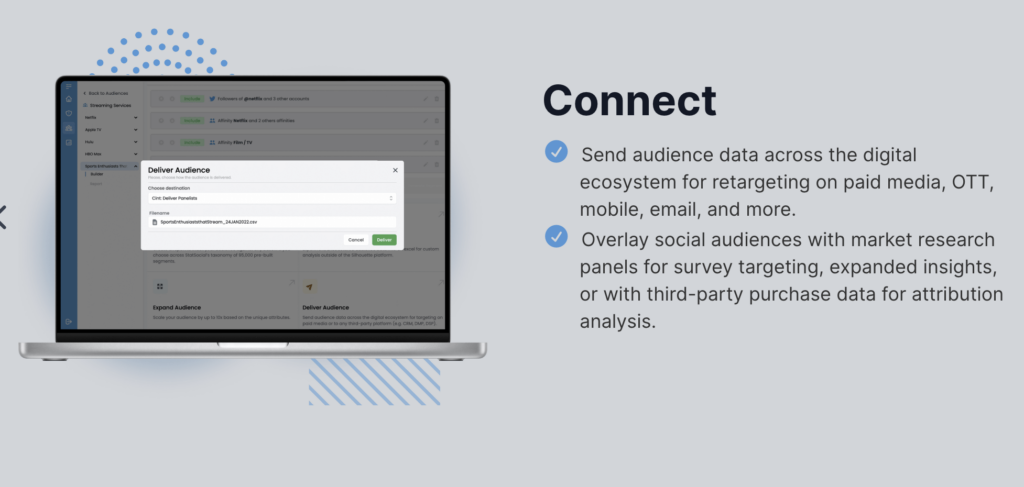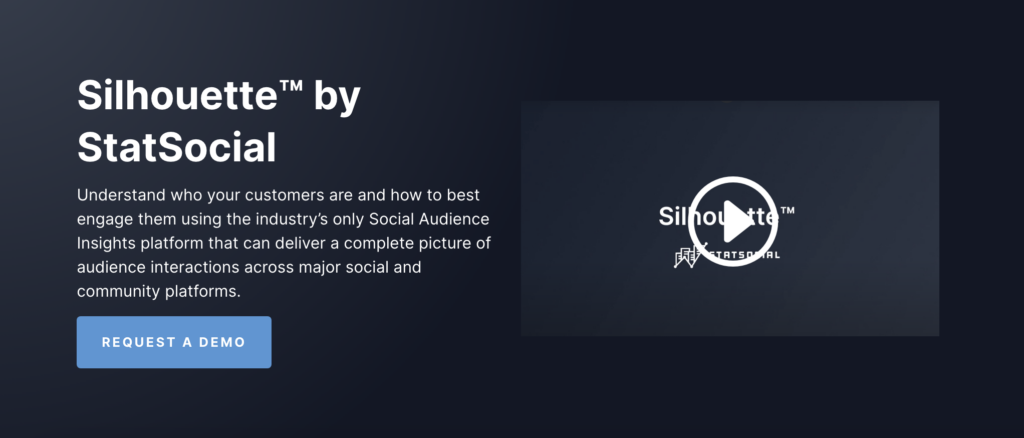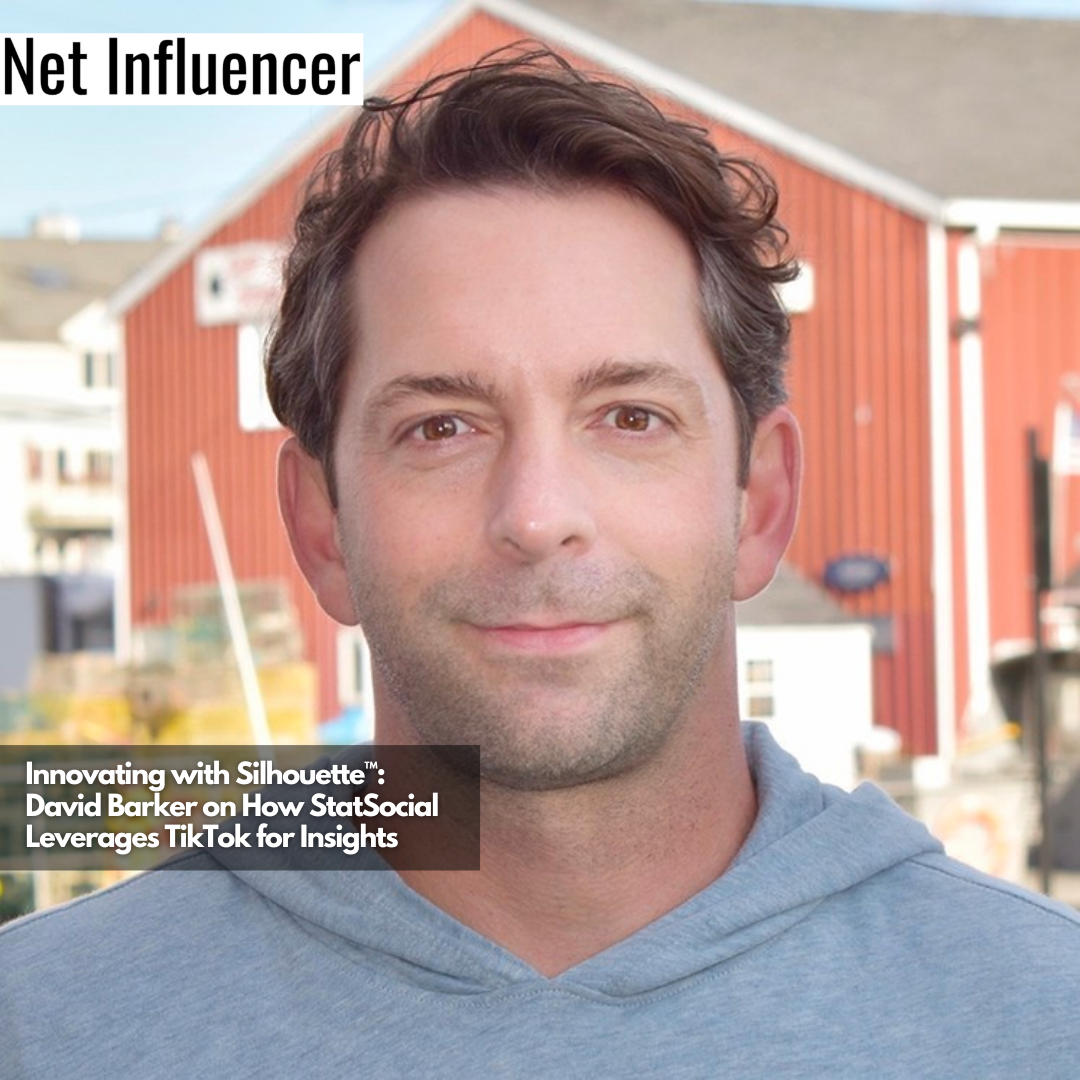Agency
Innovating with Silhouette™: David Barker on How StatSocial Leverages TikTok for Insights
Discover how StatSocial’s Silhouette leverages TikTok to unlock audience insights and revolutionize influencer validation, consumer research, and brand measurement. In this interview with CEO David Barker, learn about the platform’s features, data collection methods, and its ability to inform and validate influencer partnerships, enrich customer data, and track ROI for marketing efforts.
Discover how StatSocial’s social audience insights platform, Silhouette, leverages TikTok to unlock audience insights and revolutionize influencer validation, consumer research, and brand measurement.
In this interview with CEO David Barker, learn about the platform’s features, data collection methods, and its ability to inform and most impactful use cases across marketing efforts informing data-driven decisions.
Can you tell us about StatSocial and what the company does?
David Barker is the CEO of StatSocial, a New York-based company that services companies globally. Unlike other social insights companies, StatSocial can stitch together an audience’s social profiles across major platforms, including Instagram, YouTube, and TikTok. This enables users to gain a holistic view of their audience’s interests, affinities, and preferences and take action on this data for a variety of use cases, including consumer research, influencer discovery and validation, brand measurement, and targeted paid media campaigns.

What inspired StatSocial to develop its Silhouette platform?
StatSocial’s Silhouette platform was built on the foundation of a patented Identity Graph, creating the ability to tie publicly accessible social data and engagement to real individuals. This technology allows agencies and brands to gain valuable insights across any consumer, brand, social, or influencer audience, gaining access to self-declared interests, passions, brand and influencer affinities, media preferences, and career profiles on top of demographics. All of these unique insights inform not only marketing and go-to-market decisions but provide the ability to reach any audience at scale and access new methods for measuring campaign impact.
StatSocial continues to innovate and create new offerings to clients, including their addition of TikTok insights and the ability to measure brand health and impact by identifying and surveying exposed social and influencer audiences all within the platform.

How does the Silhouette tool work, and what kind of data does it collect?
Silhouette is a platform that allows agencies and brands to build and deeply understand any audience — a specific brand, influencer, or consumer audience such as fashionistas, people interested in skateboarding, or executive career parents, to name a few. Once an audience is created, marketers are able to access thousands of self-declared insights to better understand where and how to best engage these individuals. Alternatively, users can choose to take action on an audience for modeling, surveys, delivery to paid media partners, or integration with other first and third-party data sources.

What are the key features of Silhouette’s TikTok insights?
Agencies and brands can identify TikTok-only influencers that their target audience actively engages with. For instance, if a brand wants to reach individuals with a specific brand affinity or interest, Silhouette’s TikTok insights surface the influencer partners that are most relevant to their campaign or initiative.
Agencies and brands can also upload TikTok IDs and handles within the platform to gain greater consumer insights into a specific audience.
How does Silhouette work to unlock audience insights on social media platforms like TikTok?
Silhouette matches identities at a large scale using billions of social IDs and then conducts offline verification to know if the identity is real. “It’s what we call our social to social to offline identity graph,” David adds.
For example, if John Doe has a Twitter ID and Instagram and YouTube handle, Silhouette matches all of those profiles together into one profile. From there, they’ll verify with offline sources, which allows them to unlock great insights into John Doe’s preferences and interests.
With the recent enhancements to Silhouette, how will it help businesses leverage TikTok for their marketing efforts?
Agencies and brands can use Silhouette to inform and validate influential partnerships. They can also harness self-declared audience insights to better understand and target specific consumer, band, and social audiences, especially Gen Z, and enrich their customer data.
How does Silhouette integrate with other marketing and analytics tools?
Silhouette has integration through different means — whether it’s sending data directly to a first or third-party system or going through various partners to onboard data to other partners. One of Silhouette’s most common integrations is with client CRMs for customer data enrichment or the creation and analysis of persona-based audiences. Other integrations include enriching insights across partner panels and survey respondent data, and expanding knowledge and insights beyond answers to basic survey questionnaires.
Silhouette also integrates with social listening tools by importing Twitter IDs and handles for deep audience analysis of those behind the social conversation or exporting custom social panels for ongoing monitoring. Additionally, integration with influencer marketing tools enables advanced influencer validation and measurement capabilities.
How does StatSocial ensure the accuracy and reliability of its data?
The accuracy and reliability of StatSocial’s data come from their patented Identity Graph, which removes any bot data and fraudulent accounts.
“If you’re not on our platform, that doesn’t mean you don’t exist. You could exist; we just don’t have you, likely due to the fact that your social profile is private. But if a social account is fake or you’re not proving to be an individual, then it won’t be accounted for on our platform,” David explains.
What are some of the biggest challenges that businesses face when it comes to understanding and reaching their audience, and how can StatSocial help address them?
In the influencer space, agencies and brands are always a step away from their influencer partners’ audiences. As a result, agencies and brands never really know who they’re marketing to prior to a campaign and often end up relying on basic follower counts, engagement metrics, and preconceived notions. Additionally, when it comes to attributing value to these campaigns, there hasn’t been a way to gain accurate insights into campaign performance and impact on overall brand health or purchase behavior.
StatSocial’s Identity Graph solves this problem as it allows users to take an audience-first approach to identify and validating influencers by providing deep insights into their followers. It also enables marketers to track and measure the success of campaigns by identifying exposed audiences after the conclusion of a campaign, taking action on them for brand health surveys or integration with purchase data.
What kind of companies typically use StatSocial services? And how do they benefit from them?
Many large and independent agencies and more sophisticated brands often want to make a data-first approach to influencer marketing.
How does StatSocial differentiate itself from other companies in the consumer insights space?
StatSocial is the only platform to provide self-declared audience data across major social channels, beyond just Twitter, like Instagram, YouTube, Linkedin, TikTok, and more. Most players in the consumer insights space are only Twitter-based or rely on AI or modeled data.
What do you see as the future of consumer insights/data and measurement, and how is StatSocial preparing for it?
In the future, data needs to be able to be fused or matched with multiple data sources to get rich insights across various platforms. The access that StatSocial provides is already future-proof as it has no reliance on cookies and can be easily merged with other datasets in a compliant manner.“We’re set for the data privacy rules as more get introduced in Europe and here in the United States. And as things become much more focused around panels and move away from device IDs, we are very well-positioned,” David adds.
How important is it for businesses to be able to track the ROI of their influencer and social campaigns, and how can StatSocial help with this?
“For me, it should be the most important thing,” David says. Agencies and brands should be more conscious about their ROI because spending millions of dollars on a campaign and not knowing their return is bad news for any business. Unfortunately, many still don’t have a way to measure the brand impact of their campaigns beyond paid media. .
StatSocial’s core offering is to conduct brand measurement — whether it’s tied to a specific influencer campaign or more of an always-on tracking approach.
Can you walk us through a case study of a business that has successfully leveraged StatSocial’s services to improve its influencer marketing campaign?
One major case StatSocial had was with a global CPG client. They partnered with StatSocial to understand the sales impact of their multimillion-dollar investment in a social sponsorship. The client made this investment without a deep understanding of their influencer partner’s social following but felt that they would be likely to reach ideal audiences for the product being promoted. “We did a measurement of the people exposed to that influencer sponsorship. What we found out was that those households exposed to the sponsored content spent 8% more than a control group representing an unexposed audience,” David adds. As a result, they’re able to prove that the campaign did work and led to an increase in sales.
How does StatSocial stay up-to-date with the latest trends and technologies in consumer insights and measurement?
“It all comes from our clients,” David says. When their clients push them to do more and build more, they have to stay up-to-date in order to meet their client’s needs. As their clients ask for more features and capabilities, they’ll have to understand where the market is going and use it as a way to dictate their product roadmap and focus in the future.
StatSocial believes there are many ways to research — which they also do — but considers focusing on their clients and their needs the best way to stay up-to-date.
What do you think are some common misconceptions businesses have about social audience data, and how can StatSocial help eliminate them?
The biggest misconception is that people think social data is all Twitter data. When they see or hear social data, they’ll immediately think that it’s all about the Twitterverse. But in reality, Twitter is just one part of social data.
StatSocial actually uses multiple sources, like YouTube, Instagram, and many others, in collecting data. This way, when people look at social data thinking that Twitter represents the whole world, StatSocial can say that Twitter only represents some of it, and they actually combine data from Twitter with other key data sets to gain a more comprehensive understanding of consumer and brand audiences.
How does StatSocial measure the impact of social media influencers, and how can businesses use this information to inform their marketing strategies?
StatSocial operates very similarly to those in the paid media space. StatSocial has exposure files where brands and agencies can go on the platform, build audiences made up of those exposed to influencer content and conduct brand lift studies to measure the impact between exposed individuals and a control group.
“It’ll operate just as if you were doing a measurement on paid media,” David adds.
How does StatSocial analyze sentiment across social users, and how can this information be used to improve a business’s brand reputation?
StatSocial does a lot of brand tracking and brand health measurement, not just from an audience’s self-declared insights across social but also through targeted surveys.
How has StatSocial evolved since you joined as CEO, and what are some of the biggest lessons you’ve learned along the way?
David joined StatSocial four years ago and didn’t realize influential marketing would be as big as it is today. “I always thought the consumer insights and intelligence we had was very rich,” he adds. But one of the biggest things he believes took off is influencer marketing. Today, it has become an important way for agencies and brands to market.
How do you see the consumer insights landscape changing in the future?
For David, the consumer insights landscape will be more tied to panels because of data rights and privacy. A lot of things are going to be panel-based, like surveys and analysis. “And that’s one place where StatSocial has really pivoted toward,” David says.
What advice would you give to businesses that are considering adopting a consumer insights tool?
When agencies or brands buy a consumer insight tool, they can look at it in two ways. It could just be its own little silo, and they’re just doing general insights, or it can be a part of a workstream where consumer insights are one of the pieces of functionality.
“Think about as if users want just a point solution or a solution that gives you consumer insights while also allowing you to do other things like measure brand health or run high impact paid media campaigns, and more,” David concludes.





















